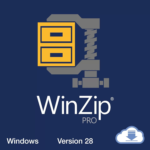A product information management software or system plays a key role in e-commerce workflows. It enables the consolidation of all product data to one master platform where product managers and other stakeholders can access, update, retrieve and distribute it across a wide range of channels. That results in structured product information that is accurate and consistent across all your marketing channels.
A product information management (PIM) system integrates all the dispersed product data and gives eCommerce companies an easier way to manage it. Let’s look at some product information you can control from a product information management system.
Product data
Product data or information refers to the uncensored objective information that you use to describe the products you have listed on your eCommerce website for sale. It includes critical information like size, weight, ingredients, material, color, and other product specifications. Engineering and product teams define and manage the product data within their systems, such as ERP tools which are then synchronized with the product information management system.
Digital assets
Companies are producing countless digital content to market their products in the digital marketing age. Digital content, also known as digital assets, includes images, videos, audio, illustrations, presentations, user manuals, product guides, sell sheets, etc. anything packages in digital format is a digital asset.
According to product data management experts at encode, a PIM system makes it easy to import and attach product-related digital assets like images and videos to the product profiles in eCommerce. That way, they can be used with product data to describe and market products to customers efficiently.
Marketing data
You can manage marketing data within a PIM system. Marketing data refers to all the information that enables a company to successfully launch, run, and optimize its marketing programs. It includes search engine optimization keywords, brand guidelines, and buyer personas. Marketing data like search engine optimization keywords provide product managers with the product information required to drive accurate and consistent keyword use across all channels when it comes to product descriptions. That results in robust on-site results and high search engine rankings.
Marketing content
A product information management system also makes it easier to manage marketing content. Marketing content encompasses the descriptions of product benefits, features, and other information used on a product’s details page to educate the consumers more and other sales-driven copies. Although marketing content involves using objective facts, you can include subjective messaging to inform the customer of a product’s value and influence a purchase.
Regionalized information
Product data also includes localized or regionalized information about a product. That means a product’s attributes are specific to a particular geographical location or market. Regionalized product information includes language variations for legal copy or marketing, images that comply with cultural norms, currency, measurement translations, and more. This information helps marketing teams meet the needs of unique existing markets while at the same time making it easier to expand to new locations.
In conclusion
As you can see, there are many examples of product data you can manage from a product information management system. The best part is that all these product attributes originate and are managed from a single reliable source.






